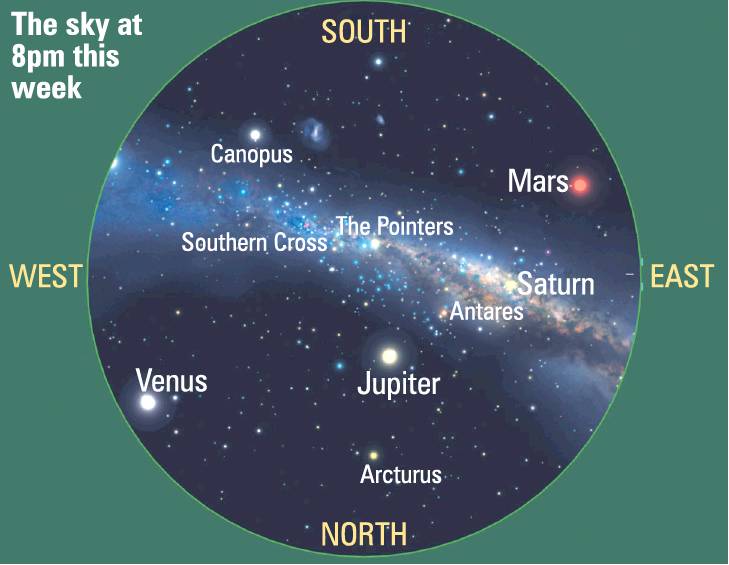
We are in the depths of winter, and the prospect of stargazing on a cold Otago night may seem uninviting.
However, I really hope I can persuade you to leave the comfort of your home and step outside to enjoy some fascinating vistas after the sun sets.
This week's sky map shows the entire sky. Hold it above your head and line up the cardinal points with your local horizon. You should be able to use it to help you pick out the brighter stars and planets.
The chart shows the sky at 8pm, and, in addition to the marvellous sight of the Southern Cross high overhead, four of the five naked-eye planets are waiting to be discovered (only Mercury is missing).
Venus is by far the brightest planet on view. It will be visible as an extraordinarily bright ''star'' just five degrees above the northwestern horizon.
This week, Venus sets just after 8.30pm, so you will need a clear view to spot it. If you have a telescope you should be able to see that its tiny disc, which is more than 150 million km away from us, resembles a waning gibbous moon.
Once you have spent time gazing at Venus, move your attention to the north. If the sky is clear, it will be impossible to miss Jupiter, visible as a bright yellowish ''star'' that, during the period we are discussing, will be nearly 60 degrees above the northern horizon. Jupiter isn't as bright as Venus, but undoubtedly dominates the northern sky.
Saturn is the dimmest of the planets on view and novice stargazers may have difficulty spotting it. If you do want to find it, draw an imaginary line from Jupiter through the nearby bright orange star Antares; if you extend the line beyond Antares, Saturn is the first bright ''star'' you come to.
Mars is the final target of this week's planetary tour. You should have no difficulty spotting it as an incredibly bright red object low in the eastern sky. Mars is rapidly approaching us, and this week is just 65 million km away.











